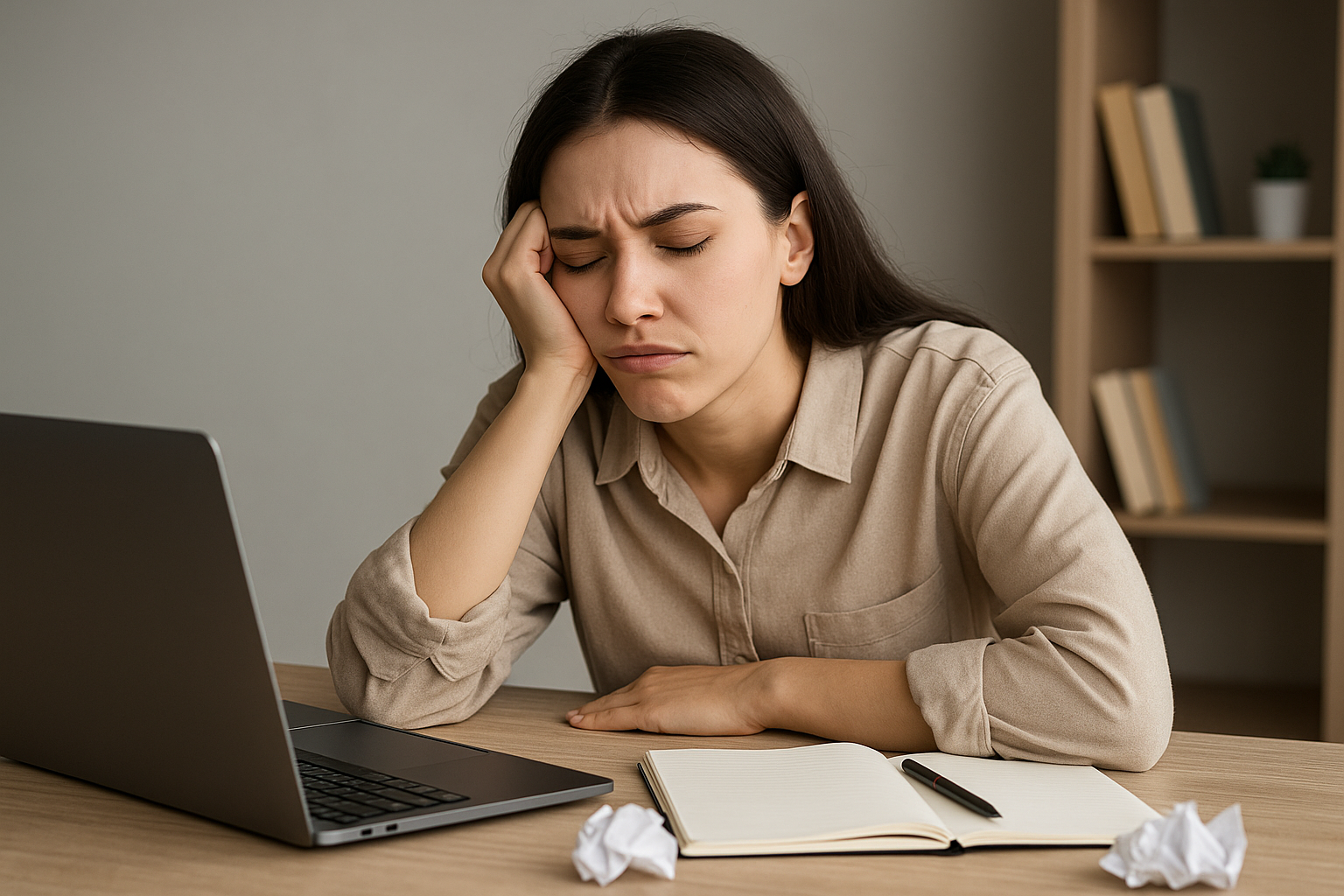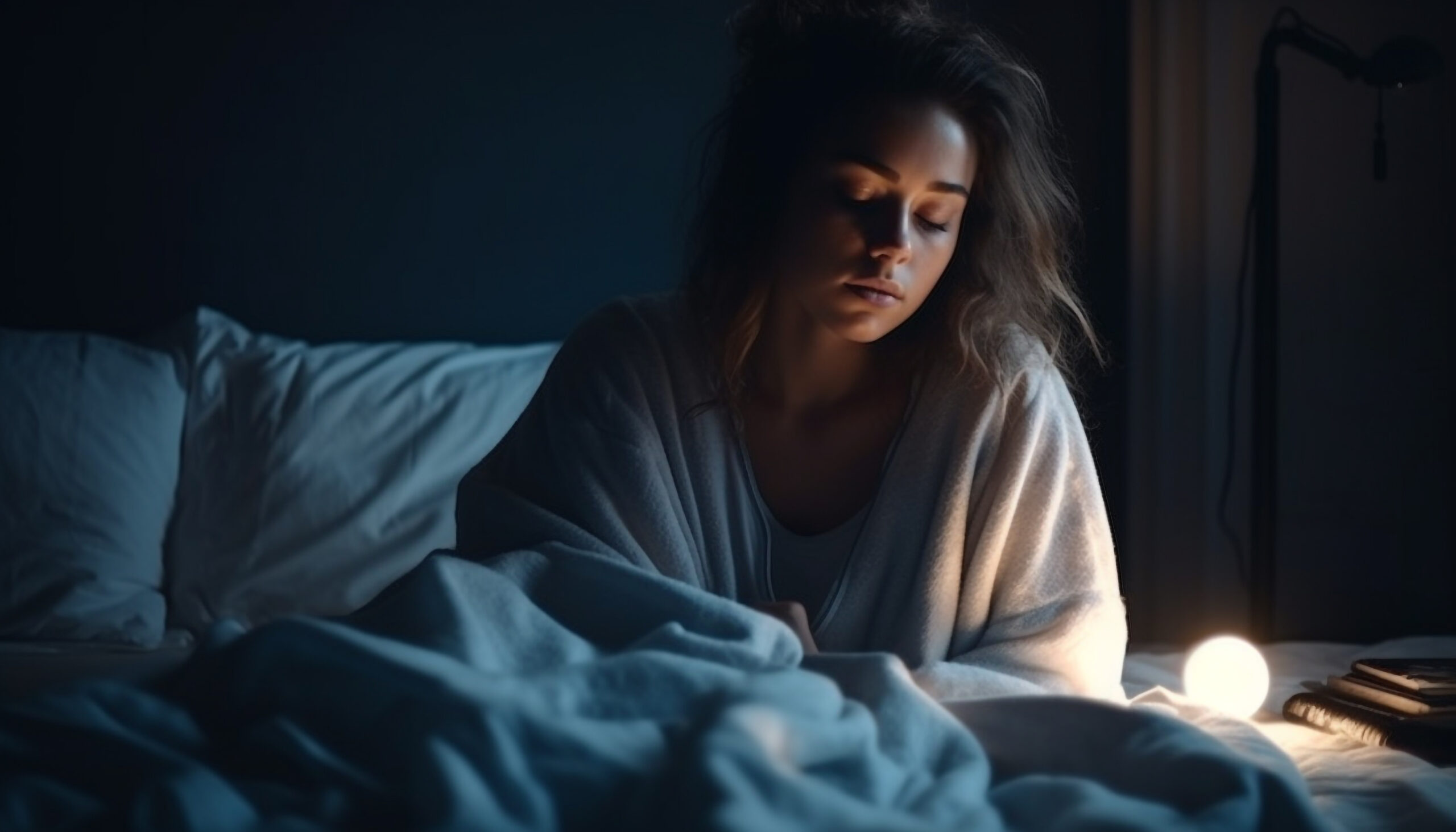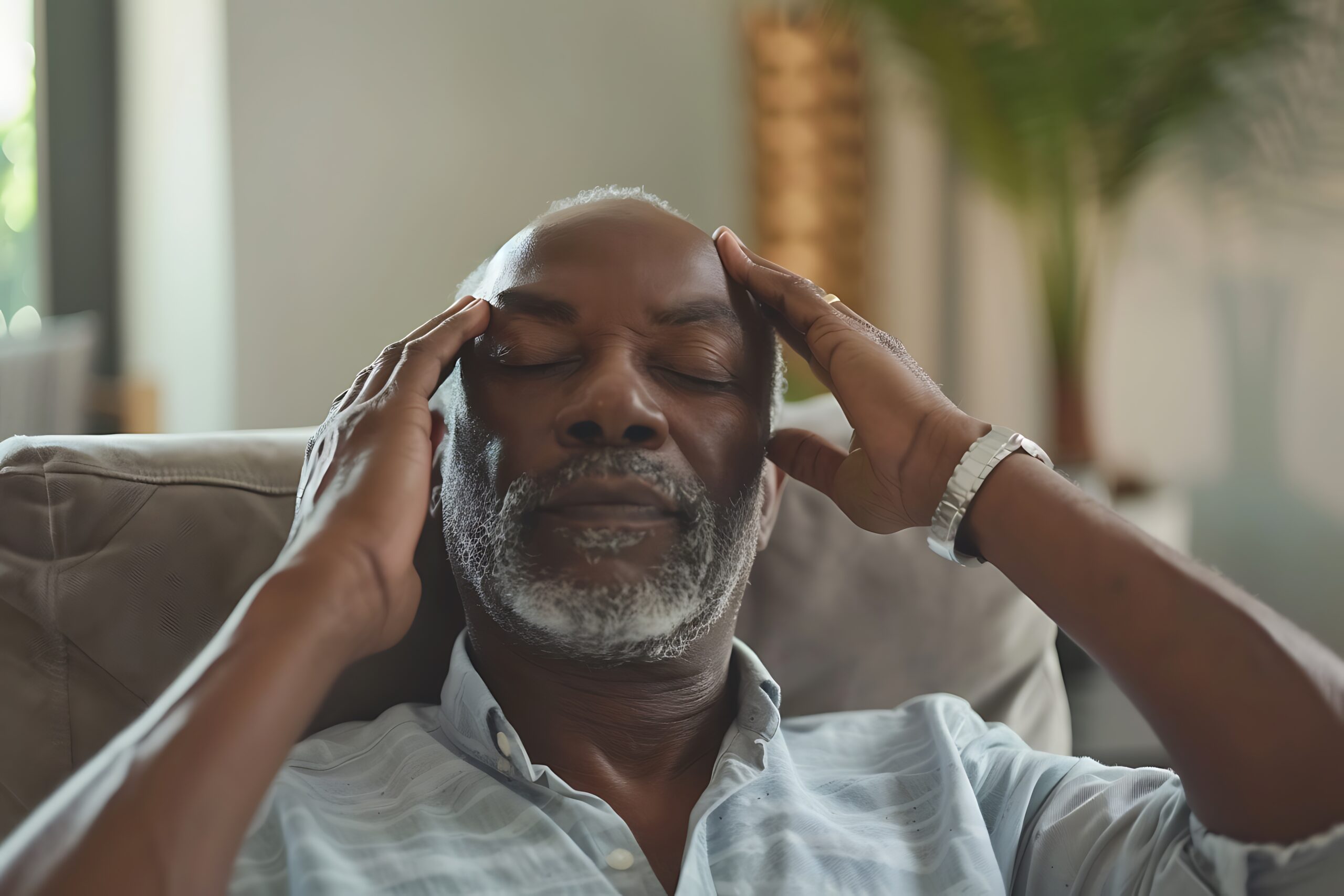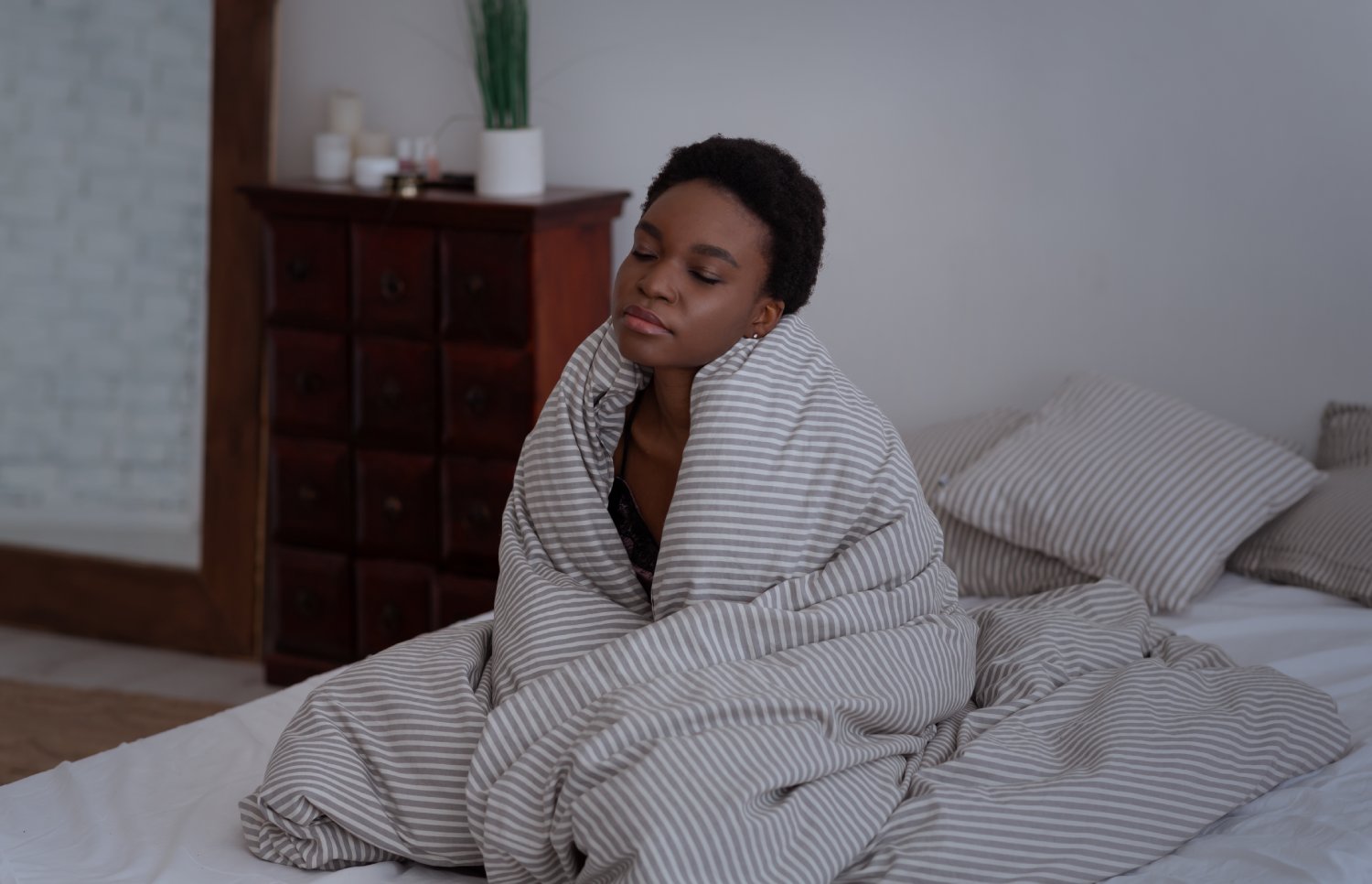By Dr Michelle Gibson-James
Difficulty staying awake during the day is called excess daytime sleepiness (EDS). EDS needs to be distinguished from fatigue and tiredness.
Excess daytime sleepiness can be broadly defined as difficulty maintaining an appropriate level of wakefulness during the day (Young 2004) or simply the intense desire to sleep during this time period (Brown and Makker 2020). A person with EDS may find themselves dropping off to sleep unintentionally during the daytime periods. There may also be complaints of unrefreshing naps or difficulty getting up fully after a nap/sleep episode (sleep inertia) (Gandhi et al 2020)
EDS distinguished from fatigue which is the feeling of exhaustion, weakness and lack of mental and physical energy (Pigeon et al 2003).
There are questionnaires that are used in medicine to distinguish between the two or to determine if either is present.
One of the most common questionnaires used to assess EDS is the Epworth Sleepiness Scale (ESS).
The ESS consists of 8 questions which assess the individual’s likelihood of falling asleep under certain circumstances (eg sitting and reading, driving, talking to someone). A total score of more than 10 is a cause for concern. The ESS is below.
Epworth Sleepiness Scale11
How likely are you to nod off or fall asleep in the following situations, in contrast to feeling just tired? This refers to your usual way of life in recent times.
Even if you haven’t done some of these things recently, try to work out how they would have affected you. It is important that you answer each question as best you can.
Use the following scale to choose the most appropriate number for each situation.
© 1990-1997 MW Johns. Used under license
| Situation | 0 Would never nod off |
1 Slight chance |
2 Moderate chance |
3 High chance |
|---|---|---|---|---|
| Sitting and reading | ☐ | ☐ | ☐ | ☐ |
| Watching TV | ☐ | ☐ | ☐ | ☐ |
| Sitting inactive in public (e.g., meeting, theater) | ☐ | ☐ | ☐ | ☐ |
| As a passenger in a car for ≥1 hour without a break | ☐ | ☐ | ☐ | ☐ |
| Lying down to rest in the afternoon | ☐ | ☐ | ☐ | ☐ |
| Sitting and talking to someone | ☐ | ☐ | ☐ | ☐ |
| Sitting quietly after a meal (no alcohol) | ☐ | ☐ | ☐ | ☐ |
| In a car, stopped in traffic or at a light | ☐ | ☐ | ☐ | ☐ |
Scoring: Add the numbers from each row. A total score of 10 or more may suggest Excessive Daytime Sleepiness (EDS).
Exactly how common is EDS?
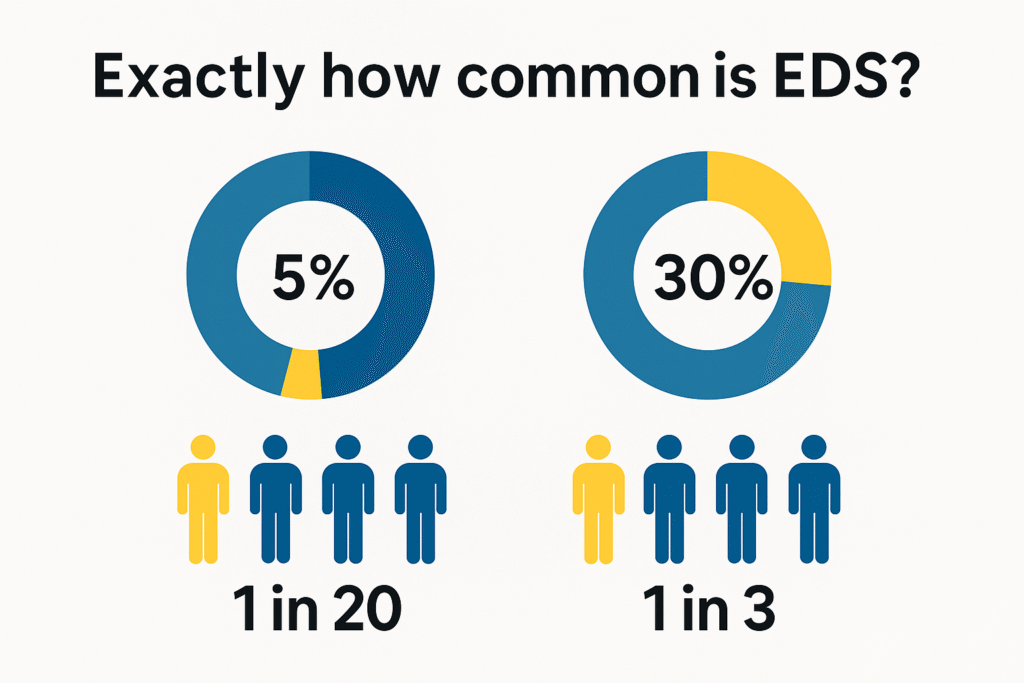
Studies have been conducted to determine the prevalence of EDS. It may occur in 4 to 20% of the population (Brown and Makker 2020), though some studies have found rates in the 30’s (Ren et al 2024).
This means that it can potentially affect between 1 in 20 to 1 in 3 persons. This is a large section of the population.
What are the most causes of EDS?
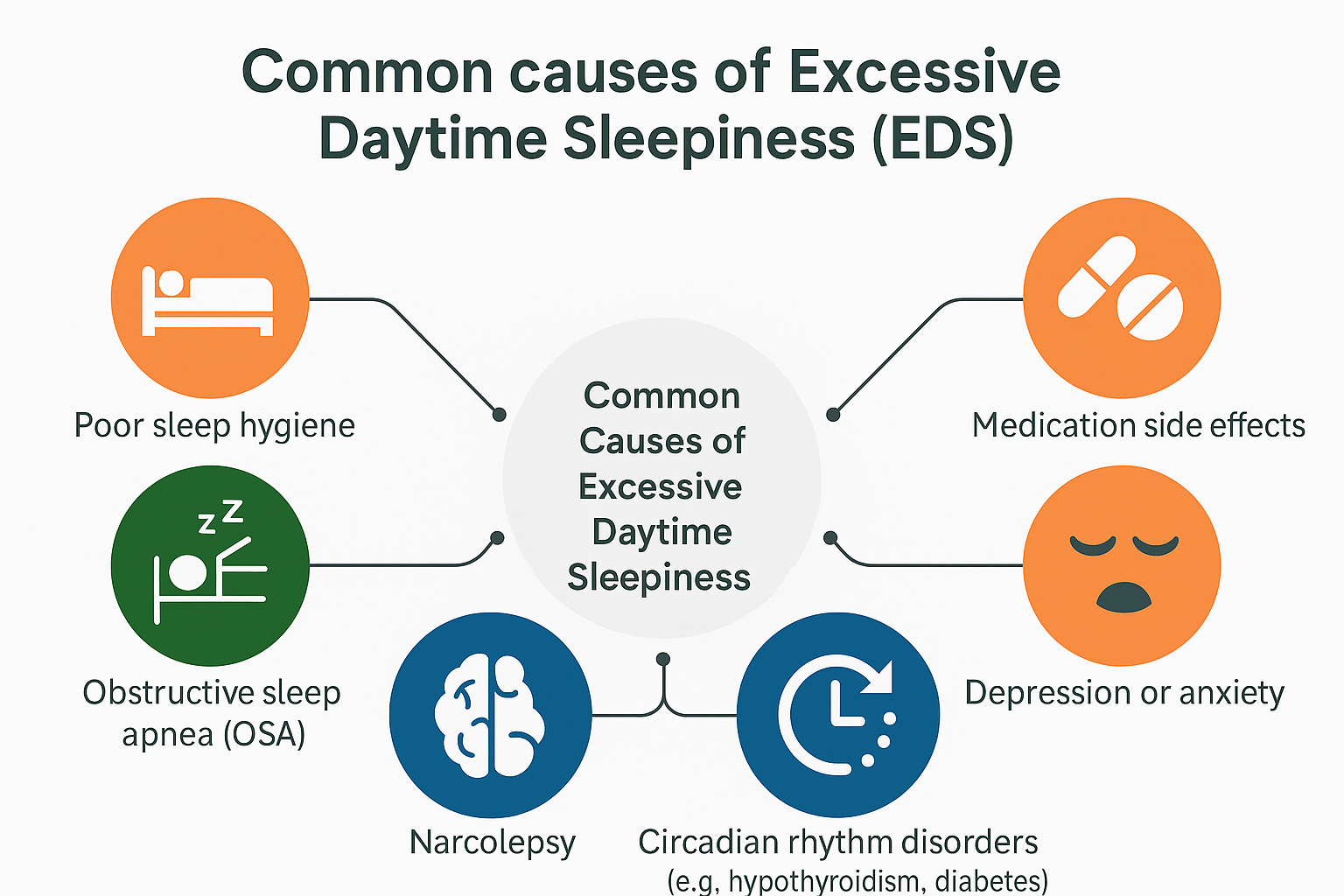
There are a number of different possible causes for EDS. These are summarized in the diagram below.
- Insufficient or disrupted sleep- Adults aged 18 to 60 are advised to have 7 hours of sleep but this target is not reached by quite a few individuals. Shift workers, with their sleep schedule that contradicts normal sleep and wake times, may also have issues with excess daytime sleepiness. Environmental factors may disrupt an individual’s ability to sleep well (eg noisy environment)
- Obstructive sleep apnea (OSA)- this condition may be under recognized. In OSA, individuals wake numerous times at night (and may be unaware) due to complete or incomplete obstruction/closure of the airway during sleep. These repeated awakenings result in a broken-up sleep period and therefore contribute to daytime sleepiness. In addition to daytime sleepiness, symptoms may include morning headaches, a history of high blood pressure, and obesity. OSA is associated with a plethora of complications that will be discussed in another blog.
- Insomnia- defined as difficultly falling asleep, staying asleep, waking too early or non-restorative sleep, can be associated with daytime sleepiness. Alternatively, because of hyperarousal, there are many people who are hyperalert during the day instead.
- Central disorders of hypersomnolence- hypersomnolence refers to excess sleepiness. The central disorders of hypersomnolence include narcolepsy (type 1 and 2), idiopathic hypersomnia, and insufficient sleep syndrome. Excess daytime sleepiness is one of the cornerstone symptoms of these disorders. Diagnosis requires a thorough medical history, sleep history with use of specific questionaries, objective tests such as MSLT (multiple sleep latency test), sleep studies and testing of a chemical called orexin.
- Side effect of medications- there are medications that may have drowsiness as a potential side effect or in some cases, the use of sleep aids may affect patients in the daytime with residual drowsiness. Some of the medications with drowsiness as a side effect include anti-histamines, anti-convulsants (meds for seizures), cough/cold medications, muscle relaxants)
- Psychiatric illnesses- some psychiatric conditions such as depression or bipolar disorder, can cause drowsiness.
- Physical illnesses- GERD (gastroesophageal reflux disease), asthma, diabetes, obesity are examples of physical conditions that can be associated with EDS.
And what about the impact of EDS?
Complications that can be associated with EDS are depicted below.
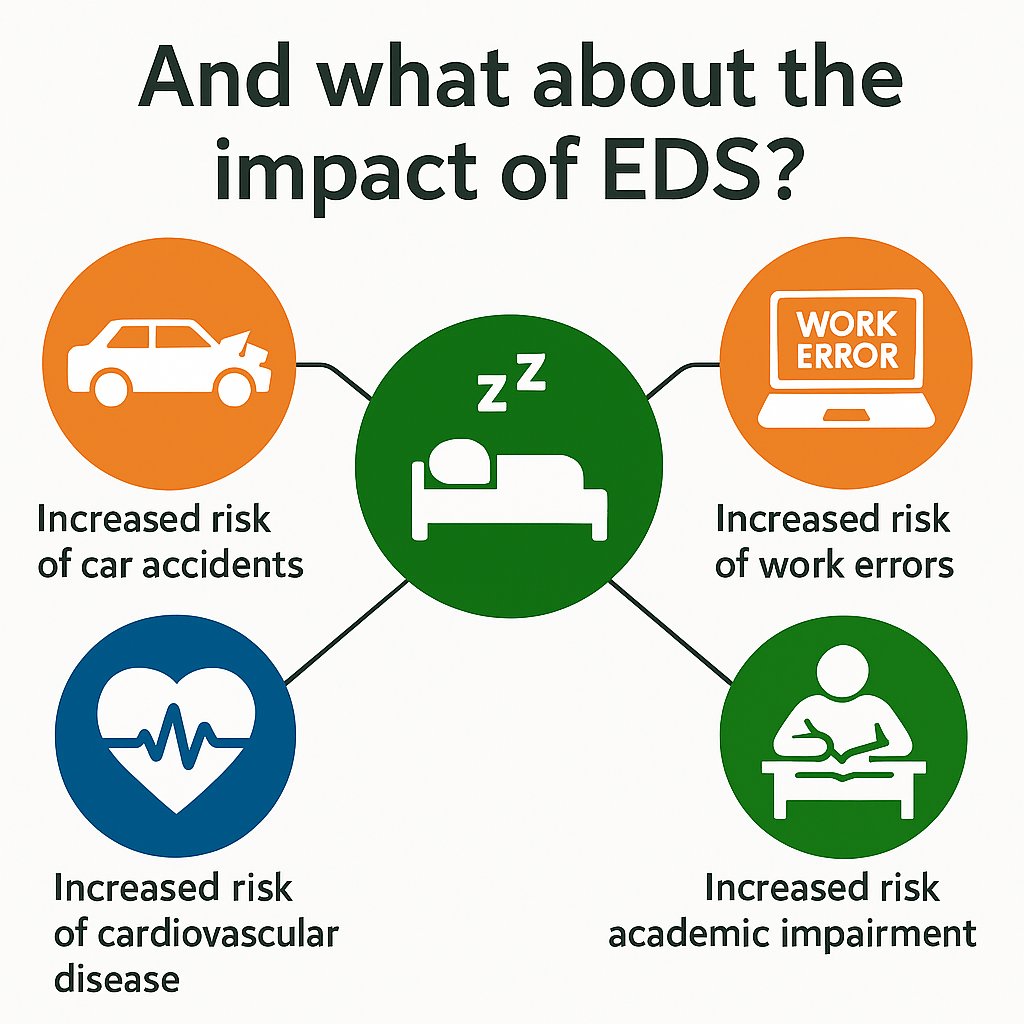
(Sun et al 2024; Gandhi et al 2021).
The treatment of EDS is dependent on the cause, this means that a thorough history and examination, which appropriate investigations (if necessary), are important to determine the exact cause so that the appropriate treatment can be initiated.
Bibliography
Young, Terry Phd, Epidemiology of daytime sleepiness: definitions, symptomatology and prevalence. J clin psychiatry, 2004; 65 [supp 16]:12-16
Brown, J., & Makker, H. K. (2020). An approach to excessive daytime sleepiness in adults. BMJ, m1047. doi:10.1136/bmj.m1047
Gandhi, K. D., Mansukhani, M. P., Silber, M. H., & Kolla, B. P. (2021). Excessive Daytime Sleepiness. Mayo Clinic Proceedings, 96(5), 1288–1301. doi:10.1016/j.mayocp.2020.08.033
Pigeon, W. R., Sateia, M. J., & Ferguson, R. J. (2003). Distinguishing between excessive daytime sleepiness and fatigue. Journal of Psychosomatic Research, 54(1), 61–69. doi:10.1016/s0022-3999(02)00542-1
Ren, J., Liu, R., Zhao, T. et al. Prevalence and associated factors of excessive daytime sleepiness in rural older adults: a population-based study. Sleep Breath 28, 1459–1464 (2024). https://doi.org/10.1007/s11325-024-03004-5
Haili Sun, Zhiyong Du, Huahui Yu, Chaowei Hu, Yunhui Du, Yanwen Qin. Excessive daytime sleepiness is associated with increased residual cardiovascular risks among coronary artery disease patients with obstructive sleep apnea. Sleep Medicine, Volume 115, 2024, Pages 131-136,

